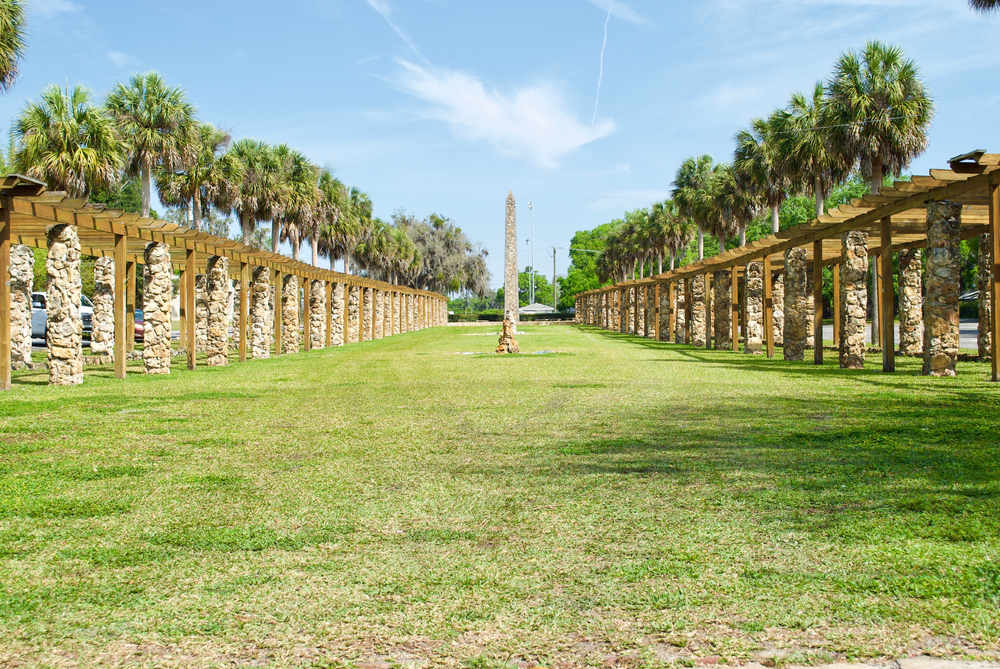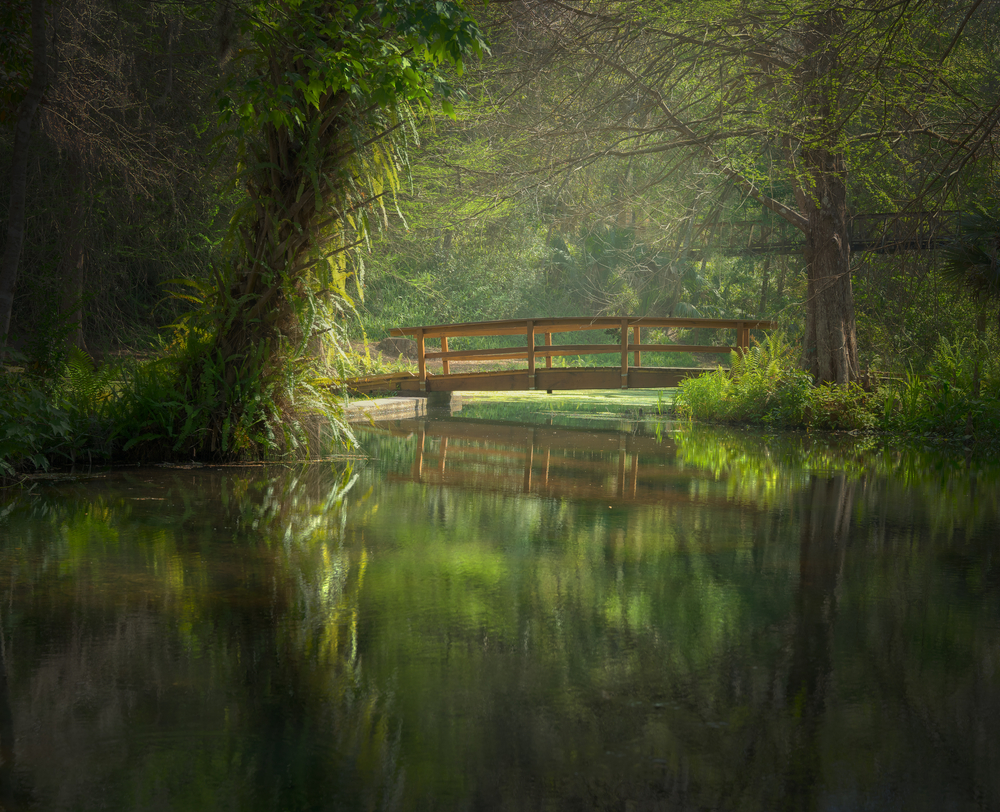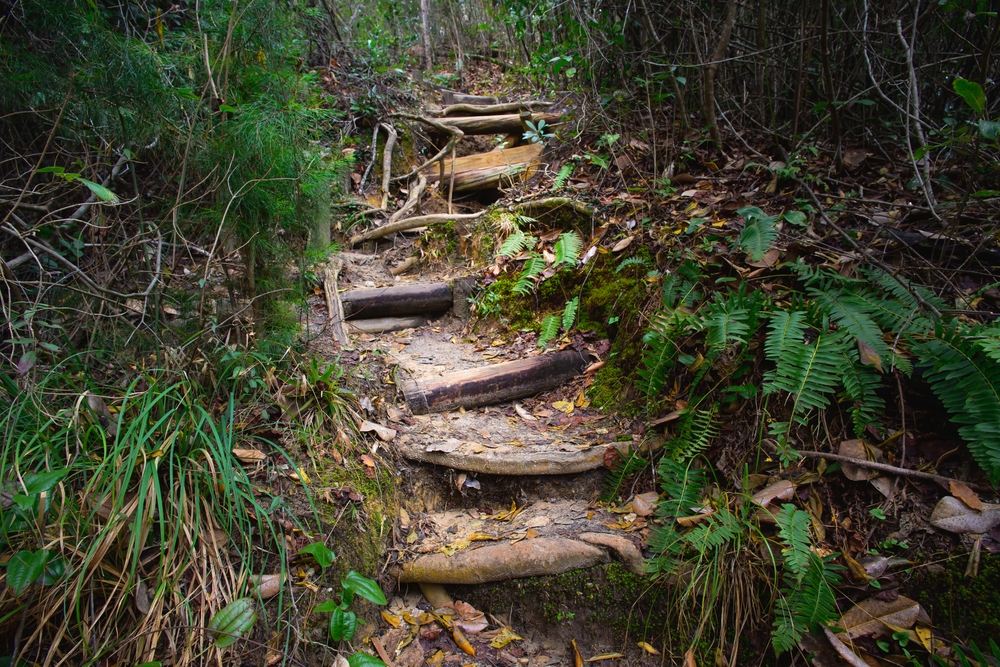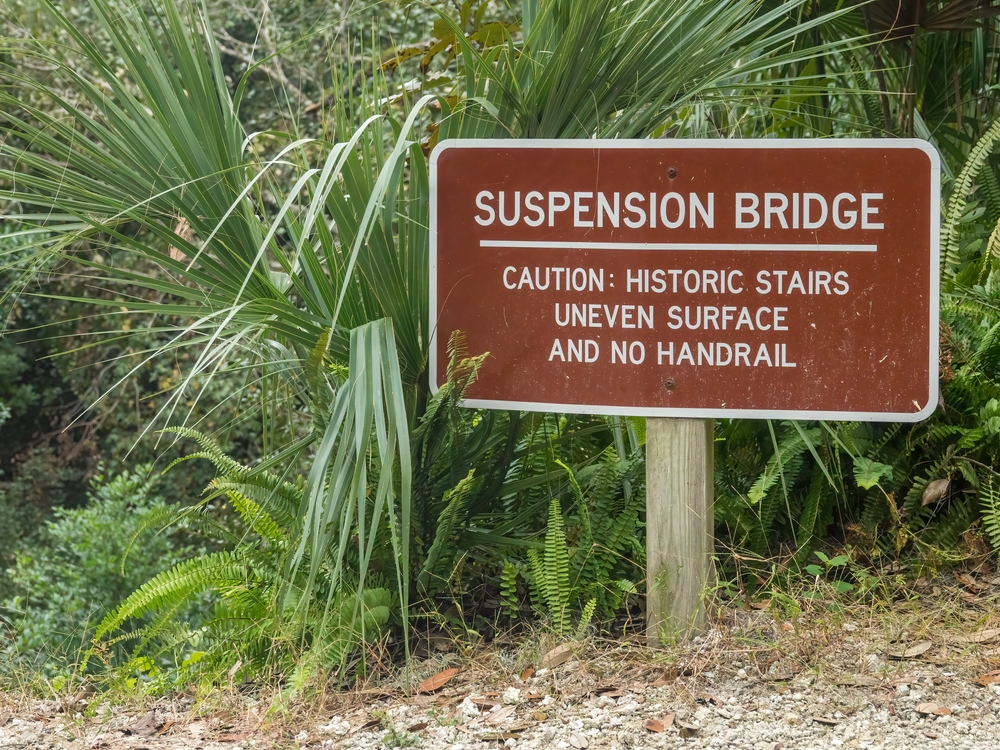When you think of Florida, you might conjure images of endless beaches or bustling theme parks. However, nestled in Palatka, a state park defies all expectations. With its cliffs and deep valleys, Ravine Gardens State Park is a geological wonder that challenges the Sunshine State’s flat terrain stereotype. As you wander its winding paths, intrigue and curiosity build with each step, leaving you to wonder if you’ve stepped into another dimension.
Nestled in the northeastern corner of Florida, this 59-acre wonderland is just an hour south of Jacksonville. Two massive ravines plunge 120 feet deep into the earth, creating a microclimate that supports plants rarely seen in other parts of the state. Ancient springs feed crystal-clear streams at the bottom of these geological marvels, adding to their otherworldly feel.
Most Florida parks sit on flat ground at sea level. Ravine Gardens breaks that pattern with dramatic 120-foot-deep ravines carved by underground springs. Rainwater seeps through sandy soil until it hits clay or rock layers below ground. Over thousands of years, water moves sideways through these layers until it finds a way out, creating springs. As springs flow, they erode sand and soil backward from their exit points, forming steep-walled valleys called steephead ravines.
Why These Ravines Are Different From Other Florida Parks

Steephead ravines differ from regular valleys or canyons. Regular valleys form when water flows down from high ground, cutting deeper over time. But steep head ravines grow backward from their springs, maintaining steep walls as they expand. Imagine digging a tunnel by removing sand from one end – sand keeps falling forward as you dig back. Scientists study these ravines to learn about Florida’s past environments. Plant species found in ravines hint at what grew here during the ice ages when Florida was cooler and drier. Springs flowing through ravines also connect to Florida’s aquifer system, making them essential for understanding how water moves underground. Ravine walls expose different rock and soil layers, allowing geologists to read Florida’s history like pages in a book. Each layer tells a story about ancient environments, from shallow seas to dunes. Scientists can piece together how Florida formed over millions of years by studying these layers.
When and Where to See the Famous Azalea Gardens
Peak azalea season runs from January through March, painting Ravine Gardens in brilliant pink, red, and white blooms. Morning visits offer ideal lighting for photos, while the late afternoon sun casts long shadows through azalea-covered slopes. Ravine Gardens boasts over 100,000 azalea plants spread across its slopes. Native Florida azaleas like Pinxter bloom alongside cultivated varieties brought in during 1933’s Great Depression garden project. Pink-and-white Southern Indica azaleas dominate many slopes, while bright red Formosas catch eyes near garden paths.
Franklin D. Roosevelt’s Works Progress Administration funded azalea planting as part of a nationwide parks initiative. Local workers planted thousands of azaleas by hand, creating jobs while building what would become one of Florida’s finest public gardens. Many original azalea specimens still bloom today, carrying on an 80-year legacy. Deep ravines create perfect growing conditions for azaleas. Steep walls block harsh winds while trapping moisture from springs below. Cool air settles in ravine bottoms year-round, mimicking conditions in azaleas’ native mountain habitats. Pine needles’ acidic soil helps azalea roots thrive.
A Symphony of Nature spring brings peak crowds seeking azalea views. Early weekday mornings let visitors avoid the busiest times while catching the optimal morning light. Photographers should bring tripods for low-light shots near ravine bottoms. Park staff mark paths to prime photo spots during bloom season. But the beauty of Ravine Gardens extends beyond spring’s main show. Fall brings scattered rebloom as temperatures drop. Winter reveals architectural branch patterns. Summer shows off azaleas’ evergreen foliage against neighboring deciduous trees.
The Park’s Great Depression Building Project

Construction at Ravine Gardens began in 1933 as part of President Roosevelt’s New Deal programs. Under Works Progress Administration funding, local unemployed workers earned wages by transforming raw ravines into manicured gardens. Civilian Conservation Corps (CCC) workers lived in camps near Palatka while building park features. Young men aged 18-25 earned $30 monthly, sending $25 home to families while keeping $5 for personal use. CCC crews built stone walls, created drainage systems, and carved miles of trails into ravine slopes.
Original limestone structures from 1933 still serve park visitors today. Primary entrance columns feature Art Deco designs popular in Florida’s Depression-era architecture. Stone retaining walls hold steep garden slopes in place, showcasing CCC stonework skills. A restored amphitheater hosts events in its original location, though wooden benches replaced stone seating for comfort. Suspension bridges have remained a star attraction since the Depression construction days. Engineers designed bridges to span ravines without support columns, preventing erosion damage below. Steel cables anchor into concrete foundations hidden in ravine walls. Bridge decks hang from vertical cables, allowing slight movement in the wind while maintaining stability. The original blueprints show that the bridge calculations accounted for Florida’s hurricane-force winds.
Park Records detail the construction methods used by CCC teams. Workers mixed concrete on-site, hauling materials down steep ravine slopes by hand. Stone walls used local coquina limestone cut into blocks at an on-site quarry. Trail builders followed natural contours to prevent erosion, a technique that still works after 90 years. Depression-era photos show massive changes as gardens took shape. Raw eroded slopes became terraced gardens. Bare ravine crossings transformed into graceful bridges. Simple drainage ditches grew into decorative stone-lined channels still carrying spring water today.
Guide to Park Walking Trails

Court of States trail stretches 1.8 miles around ravine rims, offering easy walking on paved surfaces. Kids and strollers move quickly along its gentle grades. Benches placed every quarter mile provide rest spots. Morning walkers often spot deer and wild turkeys near trail edges.
Ravine Loop drops 120 feet into ravine bottoms through a series of switchbacks. A moderate 2.5-mile hike takes most visitors 2-3 hours to complete. Stairs and steep sections require good balance and sturdy shoes. Spring-fed streams cross paths at several points, creating peaceful spots to pause and cool off.
Spring Overlook Trail is a short, steep 0.5-mile route connecting leading viewing platforms. Metal railings help with footing on inclined sections. Observation decks are perfectly positioned for sunrise photos of mist rising from ravines. Park photographers favor late afternoon light hitting suspension bridges from overlook angles.
Trail difficulty varies significantly:
- Court of States: Easy, wheelchair accessible
- Spring Overlook: Moderate, some stairs
- Ravine Loop: Challenging, steep grades
- Garden Paths: Easy to moderate, some uneven ground
Best photo spots include:
- Main suspension bridge at sunrise
- Azalea slopes from upper overlooks (January-March)
- Spring-fed streams in ravine bottoms
- Court of States curved walkway through maple trees
- Rock walls covered in native ferns
Side paths branch off main trails, leading to hidden springs and quiet garden spots. Maps at trailheads mark distances and elevation changes. Red blazes mark Ravine Loop, while blue marks Spring Overlook paths. Yellow blazes guide visitors along the Court of States route. Seasonal changes affect trail conditions. Summer rains can make steep sections slippery. Fall brings dry, stable footing and colorful maple leaves. Winter offers the clearest views through bare branches. Spring combines azalea blooms with comfortable hiking temperatures.
Animals and Plants You Can Spot in the Park
Birds fill every level of Ravine Gardens’ ecosystem. Red-shouldered hawks soar above treetops hunting for prey. Pileated woodpeckers hammer dead trees for insects. Carolina wrens and cardinals nest in thick azalea bushes. Wood thrushes sing from ravine bottoms where springs create cool, damp conditions.
Mammals favor early morning and dusk hours. White-tailed deer graze garden edges at sunrise. Gray squirrels chase through oak branches all day. Raccoons wade in streams catching crayfish. Sharp-eyed visitors might spot river otters playing in deeper pools.
Beyond famous azaleas, rare plants thrive in ravine microclimates:
- Florida anise releases a spicy scent from crushed leaves
- Native wild ginger covers the ground near springs
- Cinnamon ferns grow taller than adults in wet areas
- Needle palms survive here far north of their usual range
- Wild orchids pop up in shady spots during summer
Each season brings different wildlife viewing opportunities:
Spring (March-May):
- Migrating warblers stop to feed
- Baby deer follow mothers through gardens
- Butterflies swarm azalea blooms
- Box turtles lay eggs in sunny spots
Summer (June-August):
- Lizards bask on stone walls
- Hummingbirds visit cardinal flowers
- Fireflies light up evening trails
- Tree frogs chorus after rain
Fall (September-November):
- Hawks migrate overhead
- Wild turkeys eat acorns
- Flying squirrels become more active
- Bobcats hunt at dawn and dusk
Winter (December-February):
- Cedar waxwings eat holly berries
- Hermit thrushes winter in ravines
- Barred owls call more often
- Red maple flowers attract early bees
Year-Round Activities to Do at Ravine Gardens

Ravine Gardens isn’t just a beautiful place to visit; it’s a hub of activity throughout the year. Whether you’re looking for a seasonal celebration, a fitness challenge, or a quiet spot to connect with nature, you’ll find something to enjoy.
- Seasonal Events Calendar: Ravine Gardens comes alive with special events throughout the year, celebrating the changing seasons and offering unique experiences. From vibrant spring blooms festivals to festive holiday light displays, there’s always something happening. Check the park’s official website or social media pages for the most up-to-date calendar of events, including dates, times, and associated costs. These events often feature live music, local vendors, and family-friendly activities.
- Fitness Opportunities: Ravine Gardens offers a fantastic setting for fitness enthusiasts. A popular option is the scenic 5K route that winds through the park’s diverse landscapes. The paved path starts at the visitor center and loops around the main ravine, offering challenging inclines and breathtaking views.
- Photography Workshops: Ravine Gardens’ stunning scenery makes it a photographer’s paradise. The park often hosts photography workshops led by experienced professionals throughout the year. These workshops cater to all skill levels, from beginners learning the basics to advanced photographers looking to hone their techniques.
- Educational Programs: Ravine Gardens is committed to education and offers a variety of programs for all ages. These programs cover topics such as local flora and fauna, the history of the gardens, and conservation efforts. Guided tours are also available, providing valuable insights into the park’s ecosystem and significance. Whether you’re a student, a nature enthusiast, or simply curious to learn more, the educational programs at Ravine Gardens offer an enriching experience.
- Picnicking Spots and Facilities: Ravine Gardens provides several designated picnic areas where you can enjoy a meal with family and friends amidst the beautiful scenery. Pack a lunch, spread out a blanket, and enjoy the tranquility of the gardens.
Plan Your Visit to Ravine Gardens
Ravine Gardens State Park is a true Florida treasure, offering a unique blend of natural beauty, geological wonders, and historical significance. Whether you’re drawn to the vibrant azalea blooms in spring, the serene walking trails, or the fascinating stories of its Great Depression-era construction, this park promises an unforgettable experience. Check the park’s website for seasonal events, trail conditions, and visitor guidelines. Pack comfortable shoes, a camera, and a sense of adventure—Ravine Gardens is waiting to transport you to another dimension in the heart of Florida.

